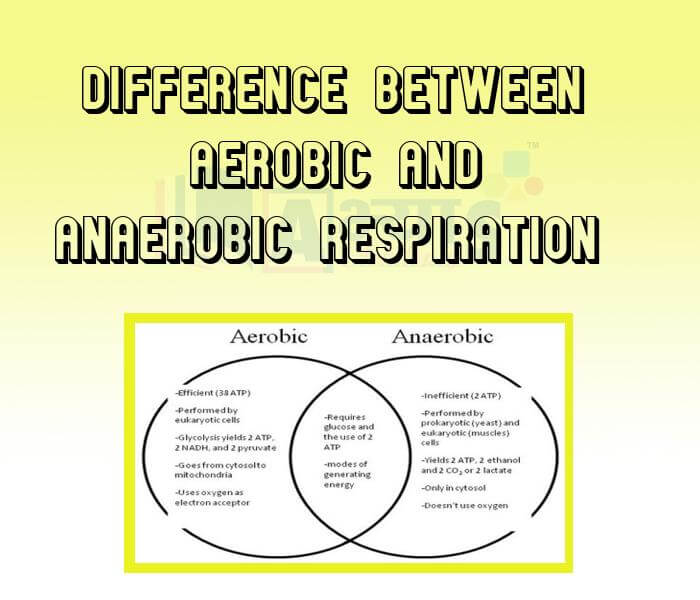Difference between Aerobic and Anaerobic Respiration











Difference between Aerobic and Anaerobic Respiration
Respiration : It is the biochemical process which involves breakdown of food material in the presence or absence of oxygen gas. It can be of two types Aerobic and anaerobic. Aerobic respiration is found in higher organisms like mammals .
Difference between Aerobic and Anaerobic Respiration
|
S. No. |
Aerobic Respiration |
Anaerobic Respiration |
|
1 |
It takes place in the presence of oxygen. |
It takes place in the absence of oxygen. |
|
2 |
The first step in this process (glycolysis) takes place in the cytoplasm, while second step takes place in the mitochondria. |
The complete process takes place in the cytoplasm. |
|
3 |
Glucose is completely oxidized into carbon dioxide, water and energy. |
Glucose if incompletely oxidized either into carbon dioxide, ethyl alcohol and energy (as in yeast) or into lactic acid and energy (as in muscle cell) |
|
4 |
38 molecules of ATP are produced by the complete oxidation of one gram mole of glucose |
Only 2 molecules of ATP are formed in this process |
In Aerobic respiration ___________ molecules of ATP are produced by the complete oxidation of one gram mole of glucose. | |||
| Right Option : C | |||
| View Explanation | |||
Aerobic respiration takes place in the presence of ____________________ | |||
| Right Option : C | |||
| View Explanation | |||
The complete process of Anaerobic Respiration takes place in the _____________ | |||
| Right Option : A | |||
| View Explanation | |||
Students / Parents Reviews [10]
My experience with Abhyas academy is very good. I did not think that my every subject coming here will be so strong. The main thing is that the online tests had made me learn here more things.

Hiya Gupta
8thI have spent a wonderful time in Abhyas academy. It has made my reasoning more apt, English more stronger and Maths an interesting subject for me. It has given me a habbit of self studying

Yatharthi Sharma
10thIt was a good experience with Abhyas Academy. I even faced problems in starting but slowly and steadily overcomed. Especially reasoning classes helped me a lot.

Cheshta
10thMy experience with Abhyas is very good. I have learnt many things here like vedic maths and reasoning also. Teachers here first take our doubts and then there are assignments to verify our weak points.

Shivam Rana
7thAbhyas is a complete education Institute. Here extreme care is taken by teacher with the help of regular exam. Extra classes also conducted by the institute, if the student is weak.

Om Umang
10thA marvelous experience with Abhyas. I am glad to share that my ward has achieved more than enough at the Ambala ABHYAS centre. Years have passed on and more and more he has gained. May the centre flourish and develop day by day by the grace of God.

Archit Segal
7thAbout Abhyas metholodology the teachers are very nice and hardworking toward students.The Centre Head Mrs Anu Sethi is also a brilliant teacher.Abhyas has taught me how to overcome problems and has always taken my doubts and suppoeted me.

Shreya Shrivastava
8thIt was good as the experience because as we had come here we had been improved in a such envirnment created here.Extra is taught which is beneficial for future.

Eshan Arora
8thBeing a parent, I saw my daughter improvement in her studies by seeing a good result in all day to day compititive exam TMO, NSO, IEO etc and as well as studies. I have got a fruitful result from my daughter.

Prisha Gupta
8thAbhyas Methodology is very good. It is based on according to student and each child manages accordingly to its properly. Methodology has improved the abilities of students to shine them in future.
